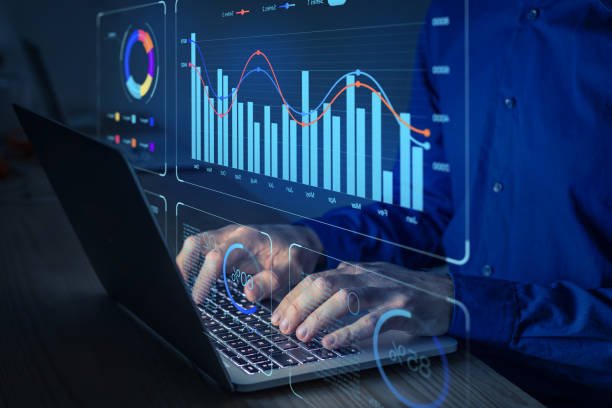Understanding data visualisation
Data visualisation makes complicated data easier to understand by turning it into pictures like charts and graphs. This helpful tool makes it simpler to grasp what complex data is trying to tell us. In simple terms, it uncovers the hidden stories in complicated data and helps organisations see trends and patterns that might be hard to spot in the raw data.
Visual representation makes data easy to understand. For example, a line chart can show how sales change over time, helping companies see patterns like seasonal trends. Using visuals makes it simple to grasp important data, so we don't miss important insights among all the numbers.
Benefits of data visualisation for businesses
When data is easy to understand, companies gain several advantages. It helps them make better decisions based on solid information. Just by looking at a visual chart, decision-makers can quickly see the important points and take action to address any issues. For example, data analytics can use interactive dashboards to monitor real-time stock prices. This makes it easier for businesses to make timely and accurate investment choices.
Data visualisation improves communication within organisations. Instead of boring spreadsheets and reports, teams can use attractive charts and graphs to convey information. Graphics make it easy to get the point across quickly and effectively. For instance, data analysts can use data visualisation to monitor product results and share important information with their coworkers.
Types of data visualisation techniques
When it comes to data visualisation techniques, the options are many. Data analysts pick the right ones based on things like why they're showing the data, what kind of data it is, who's looking at it, and more. Here are some common ways to show data:
Charts
Charts are the easiest data visualisation technique to show the differences between data sets. There are different types of charts, including line, pie, and bar charts. While line and bar charts demonstrate the relationship between elements over time, pie charts show the proportions between elements of a whole.
Plots
This data visualisation technique facilitates distributing data sets over a 2D or 3D space. It shows how the data sets are related to the parameters on the plot. Scatter and bubble are the most commonly used plots. However, when it comes to big data, data analysts often use complex box plots to demonstrate the relationship between large volumes of data.
Maps
Maps are among the most popular data visualisation techniques used across various industries. They help locate elements in relevant areas or objects like building plans, geographical maps, etc. Heat maps, cartograms, and dot distribution maps are some of the popular map visualisations.
Diagrams and matrices
Diagrams mainly show the relationships or links between complex data sets. It includes various data types in one representation. Hierarchical, tree-like and multidimensional are the most commonly used visualisation types.
Matrix is an advanced data visualisation technique. It helps in establishing the relationship between different constantly updated data sets.
Top data analytics certification courses in India
Discover India's top data analytics certification courses that provide comprehensive training in advanced data analysis and decision-making techniques, offering promising career prospects in data science.
Microsoft Certified: Power BI Data Analyst Associate
This course will teach you about Power BI, a user-friendly software for visualising data in business analytics. It's offered by Microsoft, a top data analytics institute in India, and it's great for anyone who wants to enhance their data analysis skills. The data analytics course fees vary depending on the learning provider you select, but it's also available for free. You need to score a total of 700 in the exam PL-300: Microsoft Power BI Data Analyst analyst to get the certification. The exam costs around Rs. 4,800.
IIT Roorkee Certificate Program in Data Analytics (CPDA) - IIT Roorkee via Times Pro
This 24-weekend course helps people fill in the gaps in their data analytics skills. It will teach you how to understand data collection and management, and you'll also learn how to use different analytics tools to apply these skills. Offered by one of the most popular data analytics institutes in India, the course will help participants advance in their careers. This data analytics course fee is around Rs.1,00,000.
Certificate Program in Data Science and Machine Learning- IIT Roorkee via Imarticus Learning
Built in collaboration with one of the best data analytics institutes in India, this course will teach you the fundamentals of data science and machine learning. It will also train individuals to use valuable data-driven insights to achieve organisational growth. The data analytics course fee is Rs.1,00,000 plus GST.
Key takeaway
In today's data-driven business landscape, data visualisation is the key factor that can take businesses to the top. It allows businesses to make informed decisions with clarity and confidence. Companies need individuals who can provide meaningful insights from large volumes of data. That's where a data analytics course can help. Visit Imarticus Learning to learn more about the course now.








